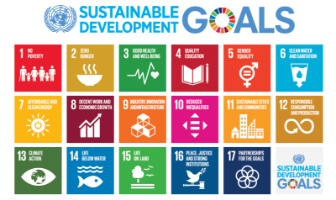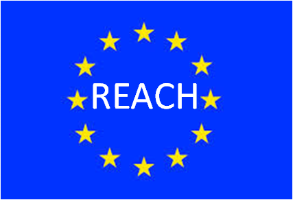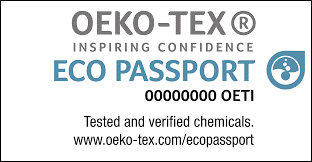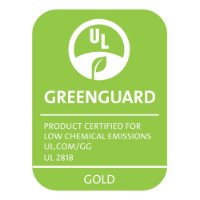Sustainable Certification for The Digital Textile Printing Supply Chain Chapter 3: Inks and Chemical

“When it comes to Textile Inks and Chemicals, there is a substantial framework enforcing and verifying sustainability and safety within production and usage within the sector”
In many senses regulation and sustainable certification moves up a gear when it comes to the inks and chemicals used in Digital Textile Printing. In this area there is no room for compromise, because the devastating effects of poor ink and chemical management cannot be under-estimated.
Water and air pollutants such as heavy metals, formaldehyde and Alkylphenol Ethoxylates (APE), are great dangers to the environment, the workforce and the consumer, therefore regulation and certification has had to be both robust and enforceable.
The environmental management directives for inks and hazardous chemicals and their non-use, are defined within the United Nations Sustainable Development Goal (SDG) Programme implementations.

Starting with SDG12 where Sound management of chemicals and waste is a specific target, to SDG3 - where Sustainable Consumption and Production of Chemicals, as well as waste and air quality are highlighted, on to SDG6 which refers to Good Health and Well-being being achieved through Clean Water and Sanitation, then SDG7 which deals with affordable and clean energy, and finally in SDG11 on Sustainable Cities and Communities.
The United Nations SDG’s may provide the goals and aims of controlling noxious chemicals and processes; however, it is the EU REACH Regulations that provide the scientific, evaluation and legal framework that governs the use of inks and chemicals in Textile production world-wide.

The REACH regulations, which stands for the Registration, Evaluation, Authorization and Restriction of Chemicals, were established in 2006, and place responsibility on industry to manage the risks from chemicals and provide safety information on all substances used in their products.
All manufacturers and importers are legally required to gather information on these chemical substances and register this information with the European Chemicals Agency based in Helsinki. This agency is the central point of the REACH system, conducting in depth evaluation of suspicious chemicals, and maintaining the public databases where professionals and consumers can find hazard information.
Non-compliance with these regulations is simply not an option, extreme penalties for breaking the rules are provided for by the REACH enforcement regulations of 2009, which are stringently enforced. As a result, of their regulatory and commercial significance these regulations have been universally adopted and adhered to by all global ink and chemical suppliers virtually without exception.
This acceptance has been the basis of control of sustainability and safety in Textile inks and chemicals, and within that framework a number of organisations exist to provide consumer friendly certification both of compliance and performance.
Three organisations stand out as being leaders in this certification process whose main objectives are consumer protection, environmental certification and workforce safety insurance.
First among these is the OEKO-TEX ECO PASSPORT, which is a mechanism by which Textile Chemical Suppliers demonstrate that their products can be safely used in sustainable textile production.

The ECO PASSPORT rigorously authenticates the safety of ingredients used in the production of Textile finishing compounds, Textile Dyestuffs and Textile Pigments. Over the last 20 years the ECO PASSPORT has provided an invaluable tool for all involved in Textile Production, from Retailers to Importers and from Printers to Apparel Manufacturers.
Covering all stages of production from Raw Materials being used to Workforce Environment the OEKO TEX ECO PASSPORT provides reliable sustainability and safety evaluation that currently encompasses over 160,000 separate product certifications.
Secondly, and particularly focussed on the manufacture and use of sustainable and safe printing inks is the Greenguard Certification system.

Products that have achieved GREENGUARD Certification are scientifically proven to meet some of the world’s most rigorous third-party chemical emissions standards, helping to reduce indoor air pollution and the risk of chemical exposure.
If ink is Greenguard Gold certified, which means it has been rigorously tested and shown to have low emissions of volatile organic compounds (VOCs) the user can be assured that this ink is safe for use in a wide range of applications and environments.
Products that have achieved GREENGUARD Certification are scientifically proven to meet some of the world’s most rigorous third-party chemical emissions standards, helping to reduce indoor air pollution and the risk of chemical exposure.
Finally, there is the Bluesign system of product verification, which provides a widespread, and, some would say, all encompassing framework of support for responsible and transparent production processes.

Bluesign say, that within their ambit, manufacturers will be able to increase the sustainability of their processes and chemicals, building trust and a positive image for downstream consumption. With Bluesign certification ink and chemical manufacturers are able to minimise risks for people, the environment and the company, while optimising profitability and saving costs.
The Bluesign network provides a means to achieve business excellence whilst working within an environment of ‘best in sector’. This involves Bluesign providing chemical inventory list verification and chemical management in the supply chain, on-site company assessment including a road map to improve sustainability performance and access to an extensive materials database and responsible manufacturers as sourcing support.
In the Bluesign, Bluestep Services system of certification textile chemical suppliers and traders receive guidance and consulting on implementing a best practice product stewardship, on-site company assessment to verify the product stewardship system and risk-based third-party chemical assessment. Using cloud based databases, Bluesign provides access for an ink or chemical manufacturer’s products to be listed on the world’s largest chemical positive list including ratings, and, in doing so, provides a truly formidable referential chemical sustainability and safety certification that is rightly admired throughout the entire ink and chemical supply chain.
As can be seen from the above, when it comes to Textile Inks and Chemicals, there is a substantial framework enforcing and verifying sustainability and safety within the production and usage of the sector.
Over the years, this robust framework has been successful in eliminating most chemical carcinogens, noxious pollutants and other hazards, allowing the consumer to use and buy product in the near certain knowledge that all the sustainability and safety bases have been covered.
Topics
Interested in joining our community?
Enquire today about joining your local FESPA Association or FESPA Direct
Recent news

Are analytics services worthwhile for wide format printing?
Nessan Cleary shares how press manufacturers are increasingly offering machine analytics services and shares if these are good value for money in the wide format sector.

Smart factories and customisation technology explored at Personalise Make Wear 2024
FESPA's Textile Ambassador, Debbie McKeegan speaks to industry specialists at Personalise Make Wear at Personalisation Experience and Sportswear Pro 2024 held in Amsterdam. Each day of the exhibitions Debbie hosted a fire-side chat with these specialists to discuss various industry topics. During this Fire-side chat with Antigro, Caldera, Print Logistics, Inkcups and Kornit Digital they discuss the role of digital technologies in personalisation, reshaping the supply chain, the future of manufacturing and more.

The pros and cons of Digital Signage and Printed Signage
Sonja Angerer discusses the pros and cons of both digital signage and printed signage. Current developments such as artificial intelligence and spatial computing are changing the situation once again. How will this shift affect printers?
